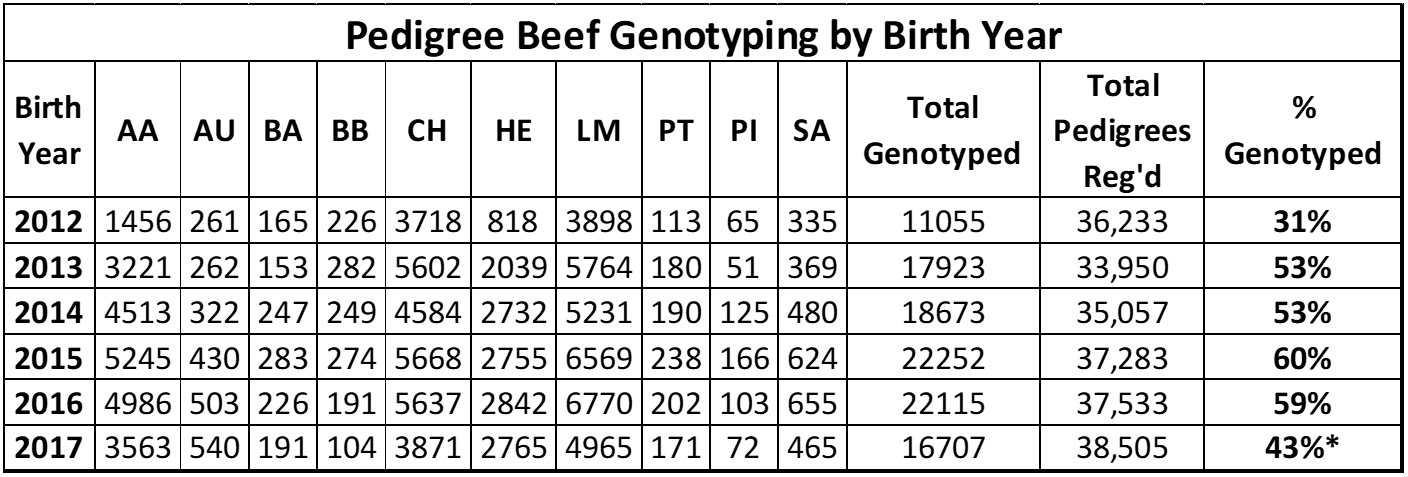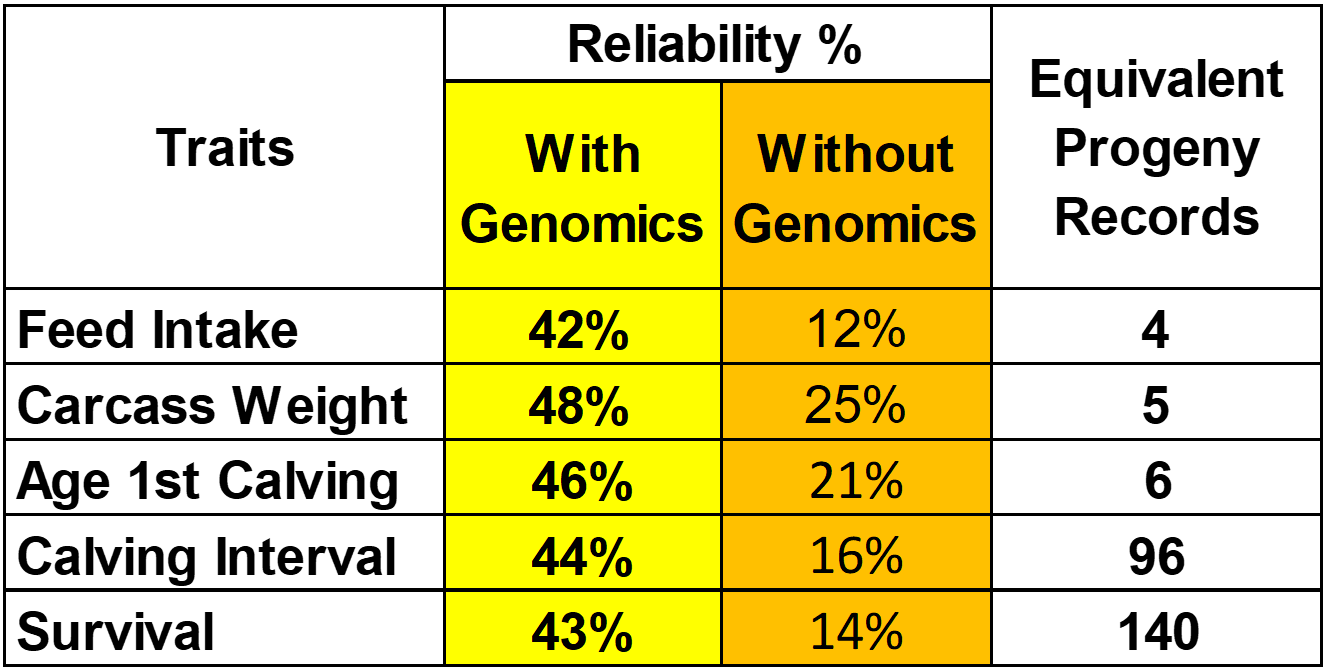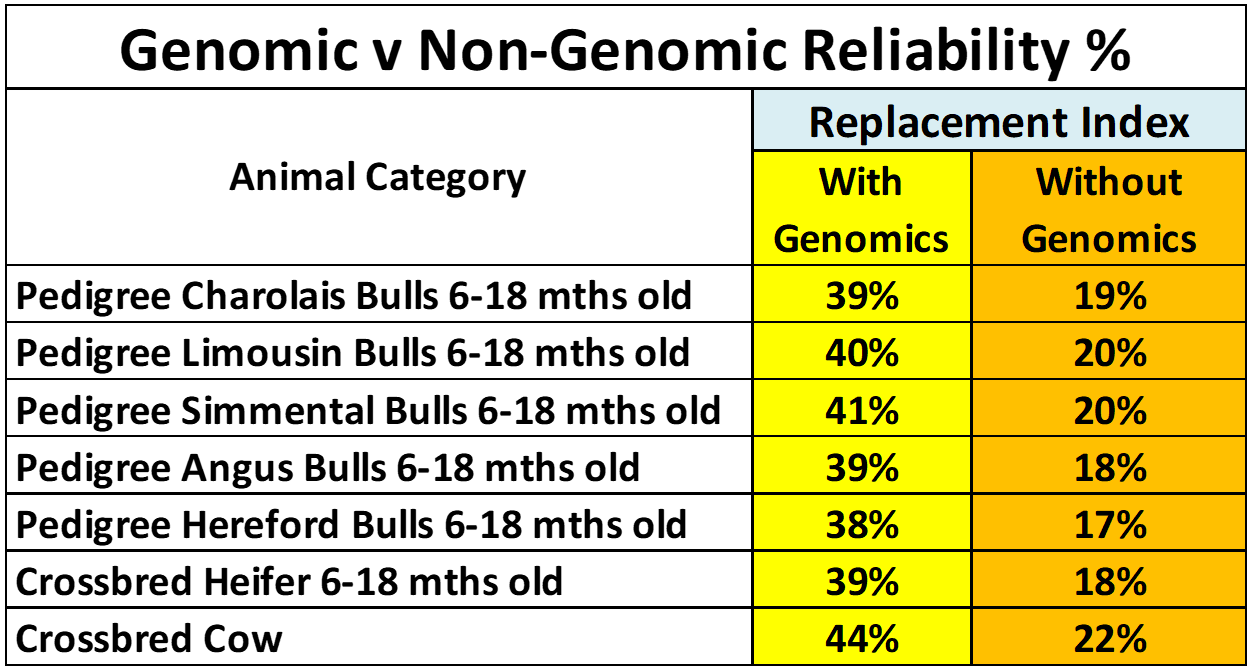For a Beef Pedigree breeder, taking a tissue sample of a young pedigree calf and sending it off for ‘genotyping’ naturally enough feels like a very ‘scientific’ and ‘unstockman’ like thing to do. However, in the ‘Stars Sensitive’ world that Irish Pedigree Breeders operate in it is critical that their animals have the most accurate indexes possible. Otherwise they could be selling themselves short. Their animals could deserve better figures for ‘calving difficulty %’ etc but this won’t happen while they are not genotyping.
A couple of €uros difference in a bull’s index could be the difference in being 3 stars or 4 stars and for a bull meeting BDGP requirements and being bought or not. Those €uros could be made up through genotyping. We would urge all Pedigree Breeders to not leave any valuable stars behind them and genotype their pedigree animals.

Approximately 60% of Beef Pedigree animals in a given birth year are currently being genotyped. This is a huge achievement in itself and massive credit is due to the whole cattle breeding industry for bringing this about. It still means however that 40% of beef pedigree animals could be squeezing more out of their precious €uro-stars. Genotyping of Beef Pedigree animals (especially for Breeders partaking in WHPR and BEEP) is an area that ICBF will be putting a lot of focus on throughout 2019 and into the future.
Background
‘Genotyping’ an animal is a process whereby its DNA (from tissue, hair, blood or semen) is analysed to find out extra information about how that animal is expected to breed for various traits.
Traditionally, a calf’s genetic merit (€uro-Star Index) has always only ever been derived from its parents (Parent Average) and it then changes over time based on data recorded on that animal itself, its progeny or any of its relatives. So an animal’s €uro-Star Index was always based on the ‘merit’ of the genes that have been expressed and recorded e.g. Calving ease scores, Liveweights etc.
The disadvantage with this approach however is that you have to wait until the calf and its relatives have expressed their genes (been weighed, had a calving etc) before that calf’s initial €uro-Star index will increase in reliability %. This can take a long time.
Advantages of Genotyping
Reliability % Increase
An animal having as reliable a €uro-Star index as possible at a young age is crucial so that a farmer can make the most accurate breeding decision possible e.g. which bull to buy at a sale or which replacement heifer to breed from.


Table 2 above shows the number of progeny that a bull would need to sire and have data recorded on in order to get the same lift in reliability % as genomics is now giving. Table 3 shows the average reliability % values for different categories of animals that were genotyped in Ireland so far, compared to those that weren’t.
Outcross Genetics
Pedigree Breeder’s will benefit greatly from genomics in terms of using ‘Outcross’ genetics. For example, when semen of a beef bull from another country is used here, his €uro-Star index will usually have a very low ‘reliability %’ value (5%-15%) attached to it. This means then that as his calves are born and data is recorded on them through their lives – his index will fluctuate, reflecting this data. However, the index of a pedigree son of this AI Sire will also then fluctuate, making it more difficult to market him. Genomics however will add 15%-20% to this AI Sire’s reliability so a better picture of his genetic merit can be established before he ever sires a calf. This AI sire’s €uro-Star index at the start so his index will then experience less fluctuations going forward than would have previously been the case.
Parentage verification
A genotyped animal can also have its Sire & Dam confirmed. DNA verified parentage guarantees that an animal is getting the most accurate estimation possible, of its genetic merit through its €uro-Star Index. It will also help farmers to avoid accidentally inbreeding animals in future.
